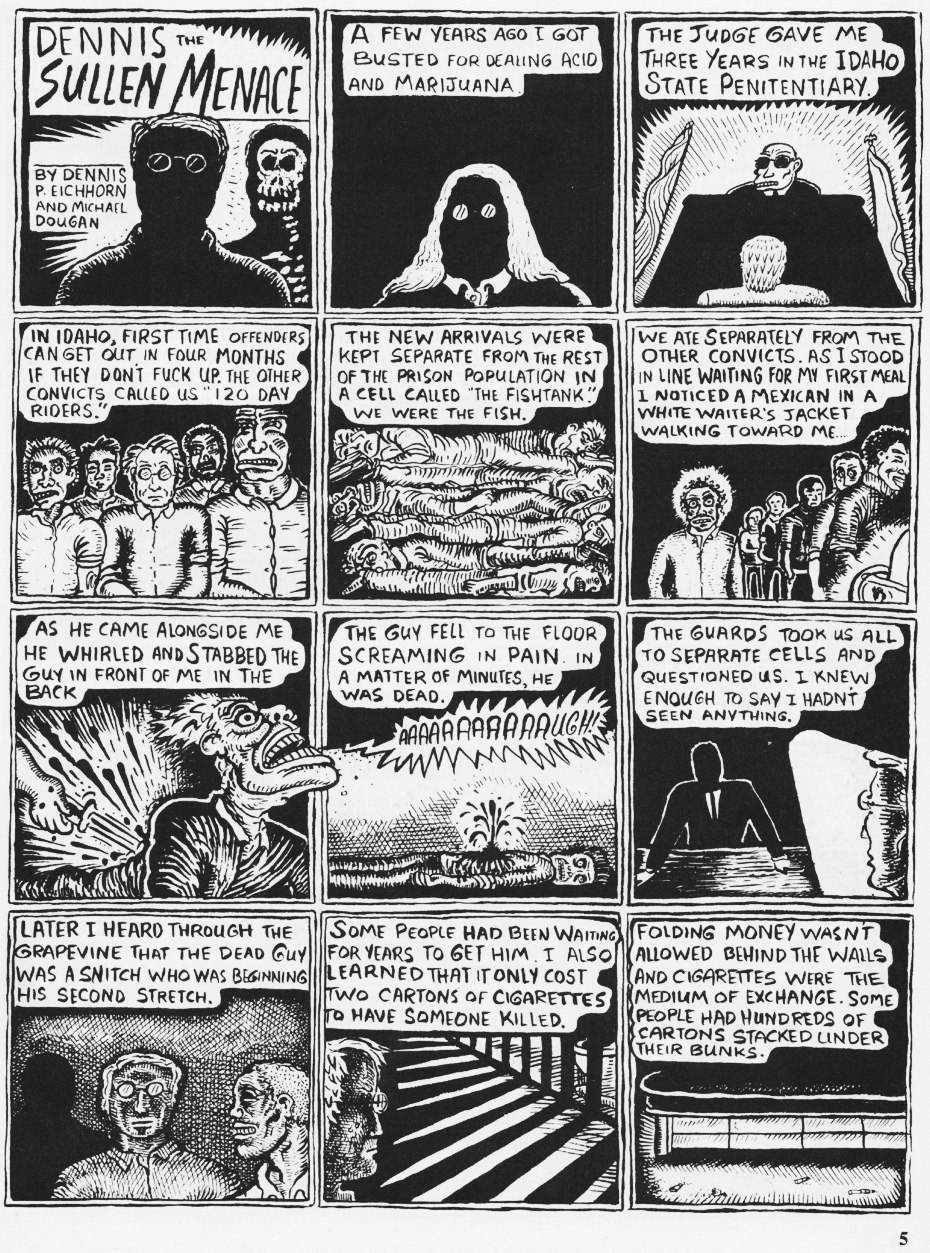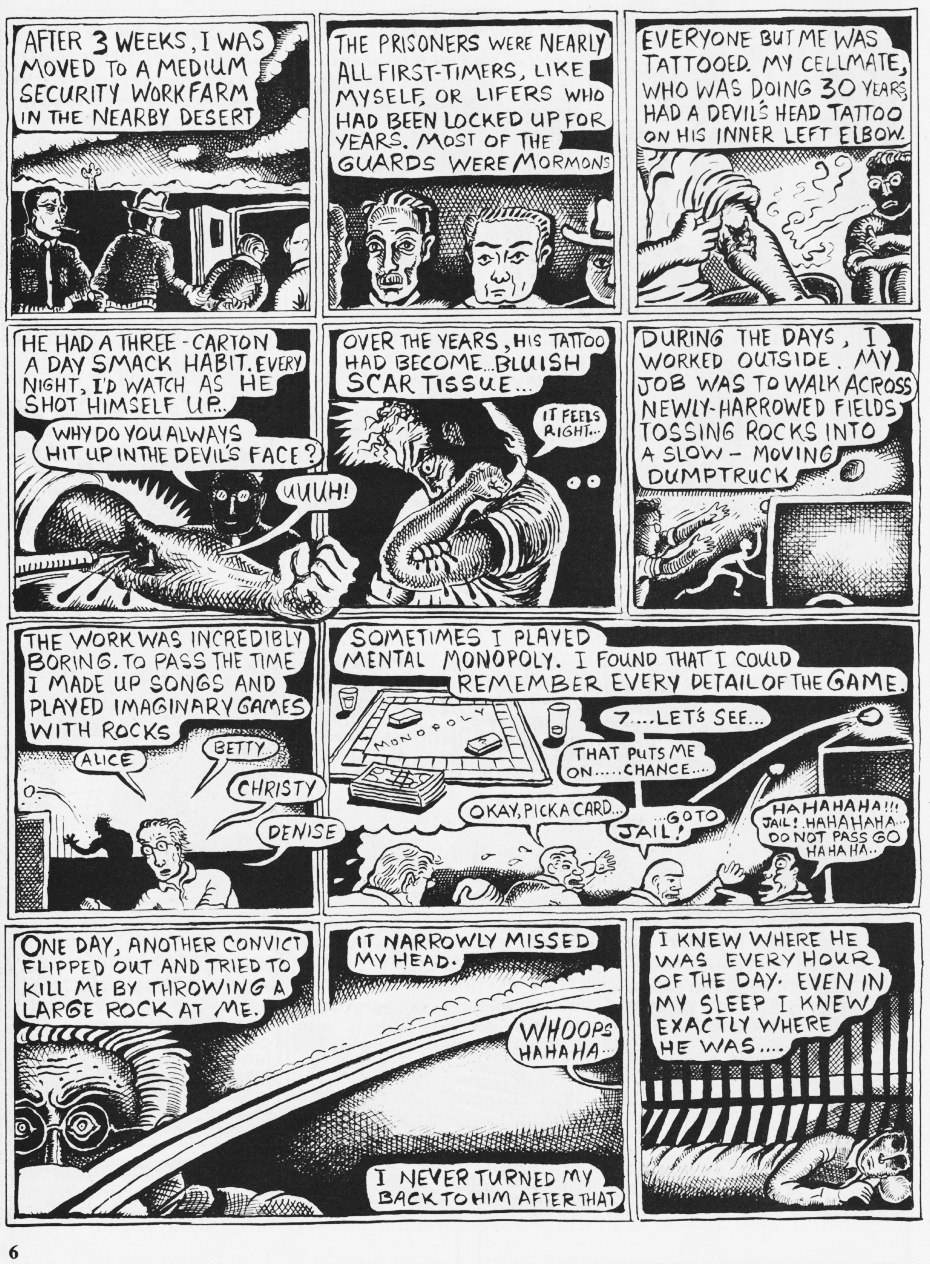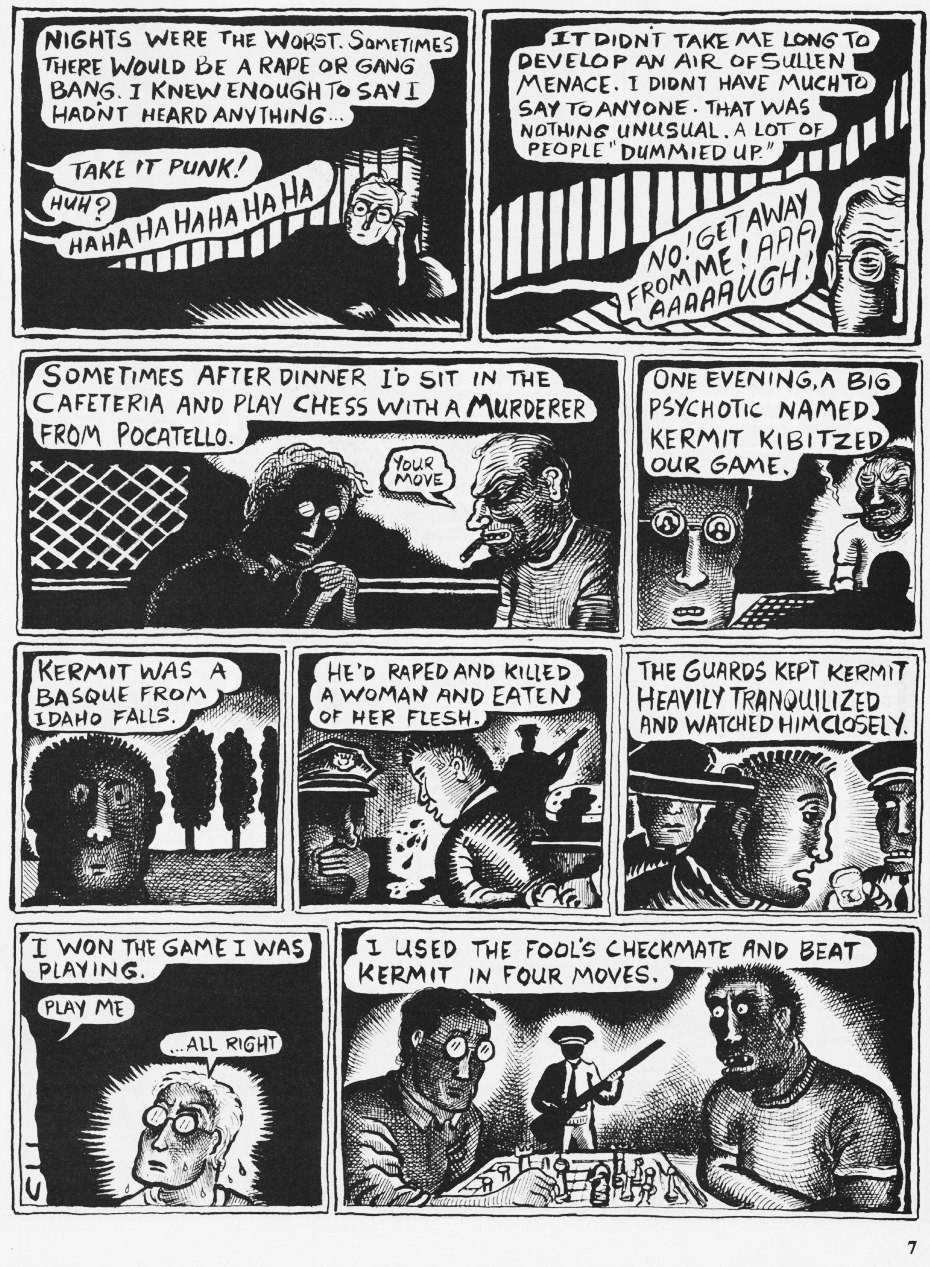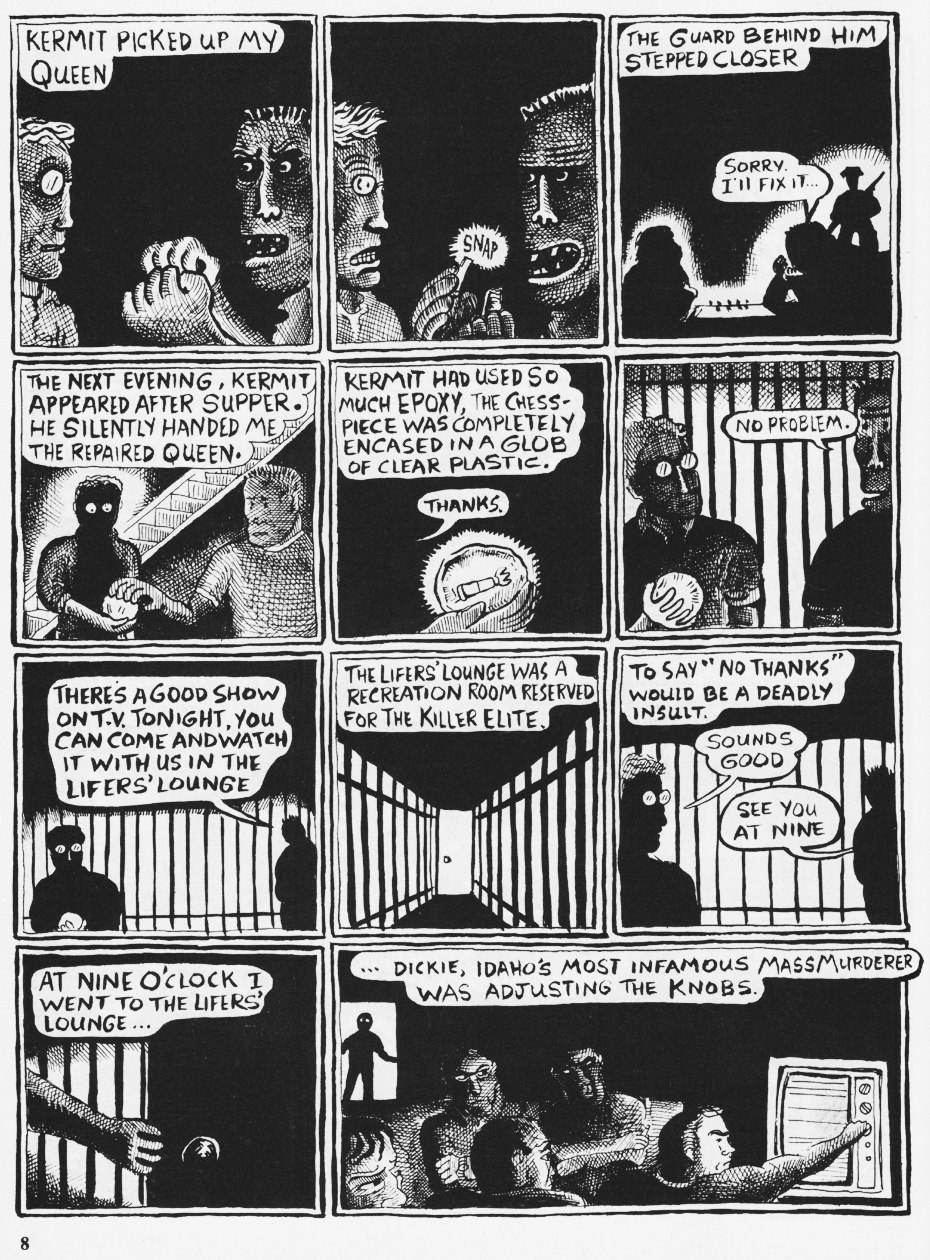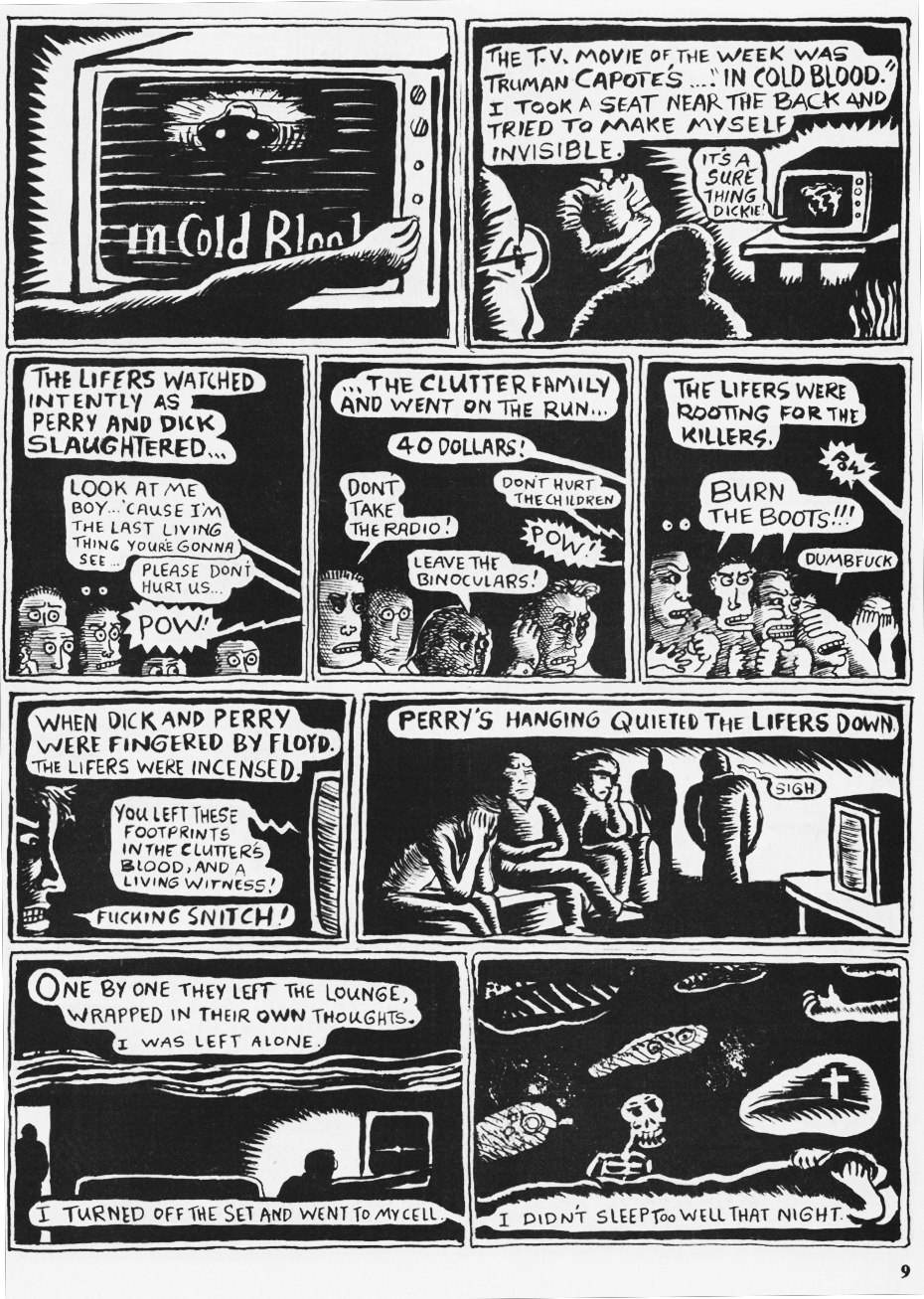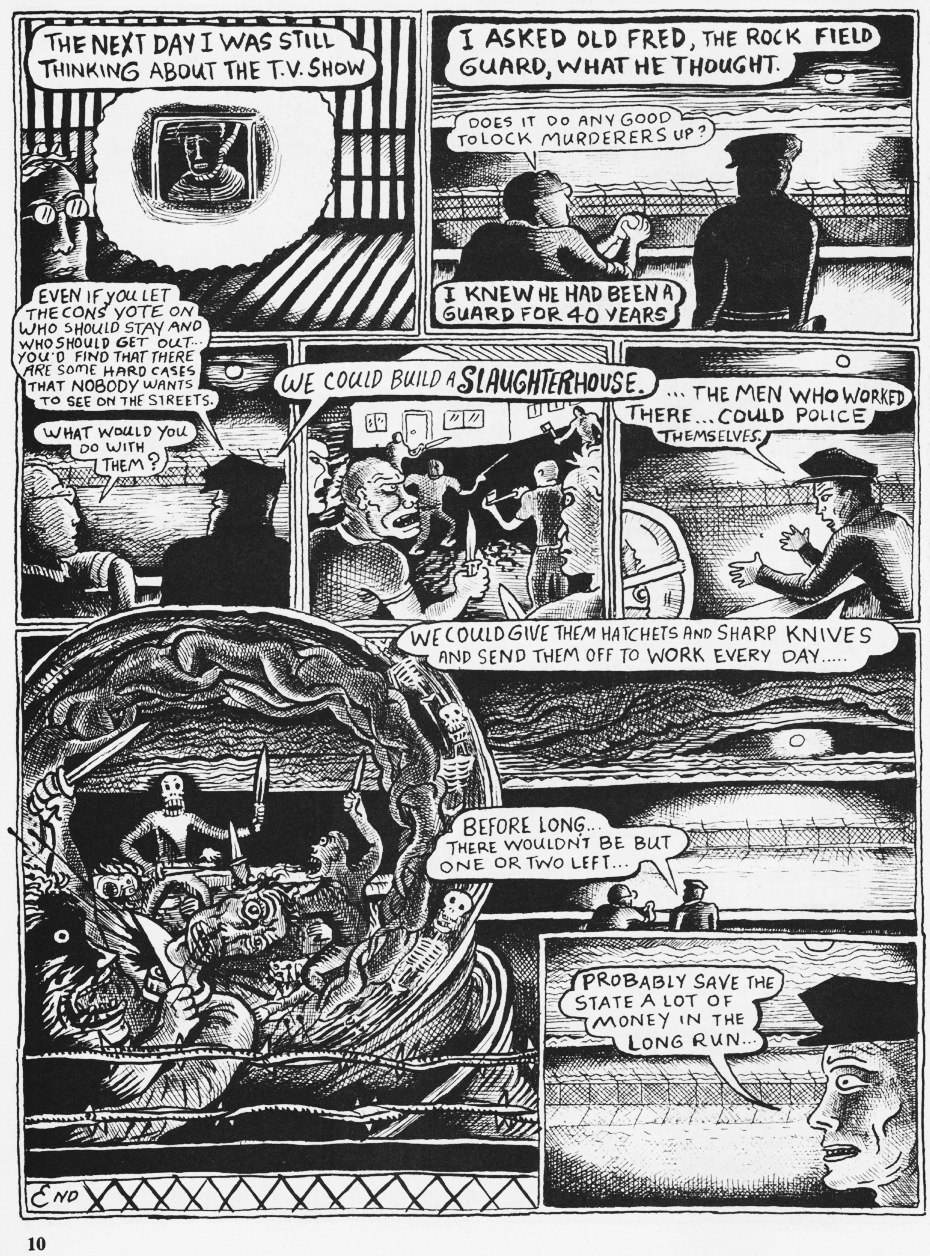http://anarchalibrary.blogspot.com/2010 ... uahua.html Wednesday, October 6, 2010Serial Torture Murders From Chihuahua to Edmonton, Guatemala to Alaska: Connecting the Genocidal DotsLiving in the United States forces dwellers to either face the horrors of what is being done to crush all humanity impeding profit or to participate in the myriad facets of complicity. The most privileged people on the planet perch on remnants of dreams reduced to the hideous nightmare of looming total global annihilation. Each must heed the call of conscience. The roots of war infect planetary society. Iraq is the acceleration of 500 hundred years of the blueprint of domination taking us to the final brink. What follows is the torture slaughter carried out by social petty tyrants confident in the disposability of their victims in a climate of spreading patriarchal fundamentalist genocide never known on such a massive scale. Such killers do the dirty work of those in power. It can and must be halted.
The torture murders of thousands of marginalized women, Indigenous peoples, homeless, immigrants, homosexuals and others on the increasingly populated fringes is but an indicater of what faces most of us. 6,000 serial murders occur annually in the U.S., leading the world in such killings. Predominantly done by white males, this phenomenon is spreading, especially in South Africa and the former Soviet Union. The American Death Squads are here and they are us.
Racism, sexism, classism, elitism and violence are essential to colonialism. The institutionalization of military corporate agenda along with alienation, destruction of culture, families and community and the stark absence of trust sew up the success of war culture. Dwindling privilege still keeps too many far removed from the desperation creeping ever closer. Time is short...
On the evening of October 16, 2003 i saw a deeply disturbing report on a Mexican News channel about the murders of Immigrants near San Diego along the Mexican border. Several men had been beaten and killed, one of whom had been in the U.S. as an agricultural worker for 30 years. A swastika was sprayed on a wall of the shanty camp where they had lived.
These murders occurred in an area where Tom Metzger, of White Aryan Resistance, had called for bigots to shine headlights along the Rio Grande at night exposing the vulnerable people coming across the border back in the early 90's. Anti-racists stood facing the bigots holding mirrors. Sadly, much more than mirrors are needed...
The news report went on to cover the situation of serial killings of young women in Ciudad Juarez and Chihuahua whose numbers climb past 380, with 400 to 1000 more missing. Amnesty International has recently put the numbers of murders at 401. 2 more bodies of young women have been found, one in April and the other in May 2004. It has been revealed that several of the victims have had their organs surgically removed, indicating the involvement of a doctor. Several bodies found have their entire insides missing. Some victims were allegedly killed during the filming of notorious snuff films.
These murders of young women began in 1993 when NAFTA (North American Free Trade Agreement) ushered in multi-national corporate factories (maquilas) close to the border where El Paseo and Juarez meet on the opposing banks of the Rio Grande.
A Mexican Mother, Maria Esperanza Hernandez, and her 19 year old daughter, Maria del Carmen Castillo Hernandez, both "undocumented workers, were beaten to death on February 1, 2004 in Fremont, California. When a resident came out to investigate the noise early in the morning, he saw a tall white man with a club over the bodies who fled in a car with 3 other white men. The weapon was left with the bloodied bodies of the women. Police have called this a possible hate crime. This crime has received very little coverage and virtually nothing from alternative media.
Anti Immigration websites are common and a disturbing development is the passing out of the first 6 printings of Deception Dollars at Peace and Justice rallies and marches. These "911 Conspiracy Dollars" display many websites on half a dozen different printings. Many of the sites, such as Alex Jones'
http://www.infowars.org, feature anti-immigrant, homophobic, anti-feminist and pro-gun articles. One site, "American Free Press", formerly known as "The Spotlight". is outright white supremacist. Links often lead to hateful diatribes against immigrants and have been attributed to influencing attacks and killings that increase along the U.S./Mexican border by vigilante militia types.
Several months ago while i was home in eastern Washington, i heard a story on CBC (Canadian Broadcasting Corporation) radio about the disappearance of 100 Indigenous women from Alberta whose bodies were being discovered in a dumping ground in southeastern Edmonton. This report went on to describe the dozens of bodies of prostitutes found buried on the pig farm of a man on trial for their murders, Robert Pickton, charged with the deaths of 15 and as many as 67. The disappearance of at least 8 more Indigenous young women on a lonely stretch of highway north of Vancouver, B.C. was also mentioned.
When doing research on the murdered women in the Alberta region, i came across a website "500 Murdered/Missing Indigenous Women in Western Canada". The scope of what is going on defies description and illustrates how horror grows when privileged people play ostrich and fail to act when atrocity occurs. A Canadian article stated that the sexual abuse in residential schools, notorious for their exploitation of indigenous children, laid the groundwork for the murders due to inaction on the part of authorities and the racism of police towards victims and their families. The site included serial murders of indigenous women in Alaska, many unsolved as well. It stresses the outrage expressed when bodies are initially discovered only to immediately diminish once it is revealed that the victims are Aboriginal.
Murders of Indigenous men in Saskatoon by RCMP have come to light over the past year. The sport of driving men far outside the city limits in sub zero weather leaving them to die was interrupted when one survived the long walk back to tell his story. The capture of Mathew Stonechild, a 19 year old Cree, by police before his frozen body was found in Saskatoon's outskirts has brought unusual attention. Tho nearly a decade later, it is serving as a catalyst for the ignored fates of others.
Over the past 5 years, i have been collecting articles about the murders of Indigenous people in border towns of New Mexico, Arizona, South Dakota, Nebraska and Alaska. I first heard about these more recent serial murders in late summer of 1999 while i was camped with my young daughter on hill above Pauline Whitesinger's cornfield at Big Mountain, Arizona. I had a short wave radio hanging from the Juniper tree above my outdoor kitchen. It was a report on 8 unsolved killings in Rapid City, South Dakota and 2 in White Clay, Nebraska being protested by Lakota people and supporters. Several days later, i found an article in the Navajo Hopi Observer about 9 unsolved murders of Indians in Winslow, Arizona. The scope of what is going on here is staggering.
In bordertowns surrounding the Navajo Reservation, unsolved serial murders of Indigenous people continue. Farmington, New Mexico has been called the most racist city in the United States. Several Indian Country Today articles describe the callous torture murders and the police who treat victims families with disdain. Tho 2 men have been convicted in some of the murders, countless others remain unsolved.
When Pauline Whitesinger, another nonIndian friend and i were in Farmington back in 1997, i was able to talk to the wife of a medicine man (both Dine) who told me how homeless Indians have hot grease thrown upon them by restaurant workers. She said it was no better than in 1973 when 3 white teenagers were charged in the torture killings of 3 Navajos. The light sentences that they received brought thousands of angry, yet peaceful, Dine peoples and their supporters out of the hills into the streets where they were met with billy clubbing police shooting rubber bullets and tear gas. The genocide lives on...
A young Navajo musician, Corey Allison, said in June of 2001, that he was in school with young men who were virulently racist, one whom released a shopping cart from a motorcycle traveling at high speed killing a Navajo. His music is permeated with the memories of Navajos beaten and murdered by the young people he went to school with. "Racism breeding ignorance and ignorance breeding racism." White teenagers beat Indigenous teenagers with baseballs bats. A Navajo woman was pummeled to death with a sledgehammer by 2 men on the edge of Farmington.
One young woman, Ramona Tewangoitewa, lost her brother Pernell, a cosmology student, several years ago. In the summer of 2000, she organized a vigil in a park in Farmington with the families of 10 victims. She told me over the phone that officials are aware of the connections with white supremacist groups, but wish to keep it under wraps. 2 white men, Leslie Engh and Robert Fry, were convicted in 2000 of the murders of two Dine people and have also been charged in 2 more killings. One gang they belonged to called itself KKK "Krazy Kowboy Killers". Ramona last saw her brother at the bar where one of the convicted men worked as a bouncer and the other frequented. Parnell's incinerated car was found at the site where he went to party, but never his body. Police told her he is still considered missing.
Since the enactment of Public Law 93-531 in 1974, calling for the forced relocation of nearly 18,000 traditional Dine (Navajo) and 100 Hopi, nearly half of the 16,000 people already relocated have died. Many have been murdered, others die of broken hearts and still others by suicide. This is all in the name of corporate driven "progress" freeing the land to expand Peabody Coal Company's massive strip mine. Coal is fed into a 273 mile long slurry line (mixed with 3 million gallons of water sucked daily from the depleted Black Mesa aquifer) to the world's largest coal fired power plant, the Mohave Generating Station in Laughlin, Nevada. This monstrosity is the source of electricity to Los Angeles, Phoenix and Las Vegas, as well as the worst emitter of green house gases.
Then there are the murders of prostitutes all over the U.S., largely unsolved, from Seattle to Spokane, from Baton Rouge and New Orleans to Columbus, Ohio and Westchester County, New York. The numbers of murdered women, mostly Indigenous, along a truckers route thru Texas, Oklahoma, Arkansas and Mississippi have grown to 11.
The men arrested in Spokane and Seattle were each questioned by police and released years before being apprehended, charged and convicted. More women were consequently killed illustrating the lax action on the part of police typical of murders affecting human beings devalued due to circumstances, poverty or lack of status. As the economic situation worsens in the U.S., people are driven to do the most demeaning acts for the sake of a few bucks. Those who have more hold on with fear responding to media driven scapegoating and criminalizing of the most marginalized and vulnerable peoples. Police states have the way paved due to apathy and compassion fatigue.
Robert Yates, convicted of the serial murders of prostitutes in Spokane was in the Army for 30 years. John Eric Armstrong was convicted of up to 300 killings of prostitutes all over the world as he traveled with the Navy. Gary Ridgeway, convicted Green River Killer, carried his bible everywhere with him during his trial. At one time he told police he had been doing them a favor by killing the women.
When Berkeley Women In Black vigiled in front of the Mexican Consulate February 13, 2004 along with the Mourning Mother Puppets, we succeeded in bringing some attention to the situation in Ciudad Juarez. We were joined by sex workers striving to decriminalize prostitution due to the dangers that economically stressed women face. When predators strike or when women want to get out of the sex trade to find more acceptable work, they are handicapped by the illegitimacy of their jobs. Reporting serial rapers or killers becomes difficult. Given that prostitution is among the top three money makers on the earth along with weapons and drugs, it makes no sense to vilify people forced into an economic system directly tied into the war machine.
Prostitution is spreading rapidly as is homelessness and drug addiction.
Unprecedented numbers of families face dire poverty creating a refugee class not seen since the massacres of whole Indigenous communities forced thousands to flee on foot or the migrations of jobless during the depression. The average age of of a homeless person is said to be 9 years. Up to a third of all homeless people are Veterans, some missing both legs or other limbs. Elderly people walk all night long carting possessions searching for a safe, warm spot to rest. In 2003, 38 homeless people died on the streets of Seattle. 40% of them were murdered. So far this year, 9 homeless have died with over half murdered. (169 homeless died in San Francisco in 2002, but no indication of how many murdered.) Displaced women hide rather than risk rape and mothers struggle to protect children from predators. What does this say about the North American continent?
Serial killings of homosexuals continue unsolved as well in Albuquerque, New Mexico, Atlanta, Georgia and other communities. The recent killing of a transgender teen from Fremont, California is in line with the philosophy that also condones the killing of abortion providers. The killing of a Dine homosexual hardly left the awareness of the reservation.
Most alarming is the situation in Ciudad Juarez due to sheer numbers, attacks against families trying to investigate, abuse of families and suspects by police, failure of officials to act, that is spreading to the city of Chihuahua as well. Several websites detail the conditions of the bodies when discovered. Mutilation, dismemberment, rape, plastic bags over the heads are among the techniques these young women endured before death. Some were alive for days as they inched toward death at the hands of their abductors. Often, the skeletal remains are suddenly found with several arranged neatly side by side with a pair flip flops by the remains indicating the identity.
Much of what is described is horridly similar to techniques used by death squad graduates from the School of the Americas in Fort Benning, Georgia. One can't help but wonder if these lurid crimes are not an indicator of the spreading philosophy of death and torture known to be inculcated at the SOA.
Not one suspect apprehended has been convicted due to the sloppiness, if not outright complicity, of police. Most suspects were tortured into confessing, then released. One Egyptian man was jailed, yet 7 more women were killed during that time. Tho he has a history of violent sexual assaults against women in the United States, he was eventually released due to lack of evidence. Police have been involved in torturing prisoners, then showing them photos of a woman being raped and mutilated. Wealthy drug lords are increasingly suspected. Some believe it is a cross border crime. Given what is happening all over North America, it would not be surprising if such killers were not part of the racist sanctioning of such behavior that comes from the United States Military and it's part in the training and arming of the Mexican Military and paramilitaries.
Many bigoted militia leaders i have talked to were Special Forces in Vietnam, trained killers with nowhere to fit. The emergence of such a vigilante mindset along the border, masked and armed, "defending" America from invasion by desperate economic refugees simply seeking work to feed their families, is an omen of what is about to explode across the land. As in Hitler's Germany, it was the most undesired, the untouchables, so to speak, that were eliminated first. The homeless, the homosexuals, the prostitutes, the mentally ill.
NAFTA was the force setting up the dynamics along the border with the development of the maquiladoras. The noxious pollution dumped by factories into the Rio Grande that caused the births of over 30 brainless babies in the early 90's has been eclipsed with murders largely ignored until the past year or so.
How corporations collaborate with death squads must be addressed. Many of the maquiladora workers killed were beginning to organize for improving conditions little better than slavery. CENECO, Mallinckrodt Medical, Morteres Electicos, Electomex, LEAR 173, Admeco, FASCO, Venusa are some of the companies that murdered women were working for at the time of their deaths. Aloca, GE, DuPont, Ford, Thomson, RCA, Honeywell, 3M, Amway, TDK and Kenwood are among the American businesses using mostly young women workers without addressing safety and security issues. The workers are expendable.
In December of 2003, Jane Fonda brought attention to the rape, mutilations and murders of 700 Guatemalan women in the past occurring since 2001. In a June 6, 2004 Guardian, UK, article, the rape, torture murders of over 400 women in Guatemala City is described as "brutality so extreme that it goes beyond ordinary crime". The situation is likened to Ciudad Juarez. Nearly 6 times that number of men have been killed, but they are not tortured like the women are. A teenage girl was found after being raped, beaten, stabbed, tied with barb wire and then finally killed by a severe blow to the back of her head. Police are suspected in some of the murders.
Colombia receives the largest military budget from the U. S. second only to Israel. Hundreds of people have been "selectively" massacred in the name of the so-called drug war, but the FTAA (Free Trade Agreement of the Americas) is the true impetus. On May 19 and 20, 2004, 12 farmers had their throats slit by paramilitaries and were dropped off at different places along a road in Arauca. This region is particularly impacted due to the presence of an oil pipeline. Women facing dire poverty are forced into prostitution and also are raped, tortured and murdered. 75% of refugees are women and children.
The world has been collectively horrified by the exposure of torture at the Abu Ghraib prison in Iraq. Those aware of conditions in prisons, on reservations, in ghettos are already familiar with the cruelty and militaristic sadism of police, INS, Border Patrol, prison guards in the U.S. This history of torture rides hand in hand with colonialism, invasion, occupation, rape, pillage and slaughter. From the Spanish Inquisition to the Bush Inquisition, the horrific nature of domination thrives on fear, division and lack of unity.
The circumstances surrounding the murders of the young women of Ciudad Juarez and serial murders elsewhere must be utilized to educate activists and citizens everywhere impacted by the killing policies of corporate globalization. The murderous racism of the U.S. government and it's military must be halted and dismantled. The partnership between murderers and colonialism must be terminated for all time. Activists must integrate addressing the failure of ending genocide in the Americas into ending genocide elsewhere. We can never hope to stop war if we cannot incorporate the failures that plague us here. Peace camps utilizing white skin privilege must be established everywhere such serial murders occur to first and foremost put an end to one more death. The killers must be apprehended and the roots of why such atrocity thrives must be destroyed.
How soldiers, paramilitaries, special forces become maniacal brutes is familiar to survivors of domestic violence. Children who witness their mothers being beaten often grow up to be either victims or perpetrators themselves. Now there are millions of dispossessed children that are recruited into forces like the Taliban as well as the notorious CIA trained Kaibeles of Guatemala and Chiapas. U.S. soldiers returning from Afghanistan have murdered their wives and one woman soldier killed her husband. Wives of soldiers tell that their husbands come home changed forever, withdrawn, easily angered, and too often, violent.
Everywhere U.S. military bases are established, prostitution emerges, followed by under reported murders of women. This has spread to all forms of militarization world wide.
What is it going to take before the genocidal dots are connected? These serial rapes and killings, also occurring in the Congo, Sudan, Sierra Leone, Iraq, Afghanistan, the Balkans, and elsewhere on the planet, are indicators of what awaits those of us who can act, but refuse to see how far advanced fascism is at this point.
May the deaths of these many women and men who have been so brutally killed outrage and motivate us to work for authentic peace and justice. We owe it to those who have died and to the coming generations. We cannot afford to do less.
In peaceful struggle,
frontlinemom
Sources:"The Broken Circle" by Rodney Barker (Torture murders of Dine(Navajo)
"Harvest of Women" by Diane Washington Valdez (Killings in Juarez)
"Indian Country Today" Brenda Norrell Articles are always excellent resources. (Torture murders of Native Americans)
"Navajo Hopi Observer"
"Gallup Independent"
"Spokesman Review"
"Seattle Times"
"The Guardian" (San Francisco)
"Left Turn" Mexico Solidarity Network Article, Dec/Jan 2004
"Guardian, UK" June 6, 2004
"Senorita Extraviada" Documentary film by Lourdes Portillo
Internet Resources:
Feminist Peace Network
Mujeres Libres Discussion List
500 Murdered/Missing Indigenous Women in Western Canada
"Columbia Journalism Review" John Burnett May 9, 2004
Democracy Now
Free Speech Radio News June 8, 2004Personal thanks to Ramona Tewangoitewa, Roberta Blackgoat, Danny Blackgoat, Pauline Whitesinger, LisaNa Redbear, Cleo Red Bear, Dorinda Moreno, Gerald Sanders and Amy Frazee
Special acknowlegement to my young daugher for her tremendous patience while i worked on this piece.Donations appreciated. Keep frontlinemoms and their children in food, clothing and shelter.



